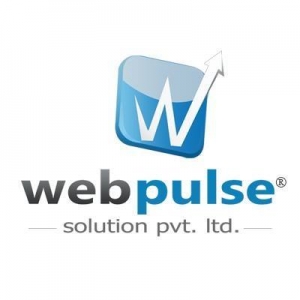Why enterprise keyword research matters for large websites
Enterprise digital properties face challenges that small sites rarely see. There are dozens or hundreds of product lines, regional variations, multiple buyer personas, and technical constraints driven by legacy CMS setups. At this scale, guessing which keywords matter or treating optimization as a series of one-off pages will produce inconsistent results and wasted effort. Enterprise keyword research creates a repeatable, scalable map of user intent, content opportunities, and internal priorities. When paired with semantic clustering, it becomes less about ranking for isolated phrases and more about owning topic spaces and intent journeys across an entire domain.
Foundations: discover, validate, and prioritize
Start with discovery: pull all internal search queries, top landing pages, product taxonomy, and customer FAQs into a single dataset. Layer on external signals such as search volume, click-through rates, and seasonality. Validation happens when you compare these signals to business metrics like conversion value, average order value, or lifetime value by cohort. Prioritization then ranks clusters not just by opportunity but by strategic alignment: some clusters should be pursued because they drive revenue quickly, others because they defend brand authority long-term.
Building a keyword universe at scale
At enterprise scale you must treat keyword research as data engineering as much as marketing. Assemble raw keywords from paid search accounts, site search logs, category pages, competitor landing pages, and programmatic content feeds. Clean the data to remove duplicates, normalize terms, and tag by product line or region. Apply intent classification so each phrase is labeled as informational, commercial, navigational, or transactional. This tagging reduces guesswork later and is essential for semantic clustering.
Semantic clustering: grouping by meaning, not just words
Semantic clustering groups queries and pages by shared intent and meaning rather than exact-match keywords. The benefit is twofold: it prevents internal competition between pages and it allows a single content hub to satisfy multiple related queries, increasing organic visibility for many variations. Build clusters by combining natural language processing techniques with human review. Start with vector-based similarity (embedding vectors) to catch related phrases that traditional keyword lists miss. Then have subject matter experts review the generated clusters and adjust boundaries based on product nuance and legal or regulatory requirements.
How to design clusters that scale and convert
A useful cluster mirrors the customer journey. At the center place a pillar page or a canonical hub that addresses the core intent and links to supporting pieces that are narrowly focused. Each supporting page is optimized for a specific sub-intent and carries canonical signals back to the hub. Ensure internal linking reflects business priorities: high-value product pages should be reachable within two clicks from the pillar. Monitor engagement metrics for each cluster to identify pages that need more depth, richer media, or stronger calls to action.
Workflow and governance for enterprise teams
Create a centralized taxonomy that all teams—content, SEO, product, legal—agree on. This governance layer should define how clusters are named, which teams own which clusters, and escalation paths when content must be updated quickly. Version control matters: maintain a living spreadsheet or database where each keyword, its cluster, search intent, target URL, and KPI are tracked. Regularly scheduled audits should be part of the workflow so clusters remain accurate as products, messaging, and search behavior change.
Tools and techniques without over-reliance
Enterprises benefit from advanced tooling that automates discovery and clustering, but tools should not replace expert judgment. Use keyword research platforms to get search volume and trend data, and use sentence-transformer or other embedding models to generate semantic vectors. Combine that output with clickstream or analytics data to ensure clusters reflect real-world behavior. Where tooling produces ambiguous clusters, bring in cross-functional SMEs for final decisions. The goal is balanced automation: reduce manual work for obvious decisions and preserve human oversight for strategic moves.
Measuring success: metrics that matter
Beyond rankings, measure cluster-level performance using a mix of search visibility, click-through rates, engagement on hub pages, and downstream business metrics such as demo requests, signups, or revenue. Evaluate cannibalization by checking keyword overlap and organic entry points; if two pages are competing for the same cluster, decide which one to consolidate or repurpose. Conduct cohort analysis to understand which clusters attract high-LTV users and which convert at lower rates but offer brand reach.
Common enterprise pitfalls and how to avoid them
A frequent mistake is treating clusters as static. Market dynamics and search behavior shift, so clusters should be re-evaluated at least quarterly. Another pitfall is poor governance: when product marketing, regional teams, and SEO work in silos, competing pages proliferate and thin content spreads. Prevent this by enforcing your taxonomy and making the cluster database the single source of truth. Finally, don’t chase vanity search volume without connecting to conversion value; prioritize clusters that align with commercial and strategic goals.
Advanced tactics: multi-dimensional clustering and internationalization
For enterprise sites that span regions and languages, build multi-dimensional clusters that include intent, product line, and locale. Use language-specific embeddings to ensure semantic similarity transfers correctly across translations. Where structural differences exist between markets, design separate but consistent cluster templates so engineering can reuse components like schema markup and hreflang implementation. Consider content modularization so components like specifications, reviews, and legal disclaimers can be assembled dynamically for different product variations without duplicating full pages.
Integrating with paid and product strategies
Semantic clusters offer alignment opportunities outside organic search. Feed high-performing clusters into paid search and discovery campaigns to capture incremental traffic while organic authority grows. Use cluster data to inform product copy, taxonomy changes, and feature prioritization. If a cluster shows large intent but poor product fit, that can spark new product ideas or UX changes that meet user needs more directly. An Advanced Digital Marketing Course for internal teams can accelerate adoption of these cross-functional practices by teaching how to translate cluster insights into paid and product experiments.
Implementation roadmap: first 90 days for enterprise teams
In the first 30 days, collect and consolidate all keyword and search data into a central system and label intents. Between days 31 and 60, generate semantic clusters using embeddings, then run a cross-functional workshop to validate and assign ownership. From days 61 to 90, pilot a few priority clusters with new or consolidated pillar pages, set measurable KPIs, and build a cadence for reporting. This phased approach reduces risk, demonstrates quick wins, and lays the foundation for broader rollouts.
Closing: long-term thinking wins
Enterprise keyword research and semantic clustering are not one-off projects; they are strategic capabilities. When done well, they reduce wasted content spend, prevent cannibalization, and create clear pathways for users from discovery to conversion. Invest in governance, blend automation with expert review, and measure success by business outcomes rather than raw position changes. Over time, the semantic clusters you create will become valuable intellectual property that guides content, product, and paid strategies across the organization.








